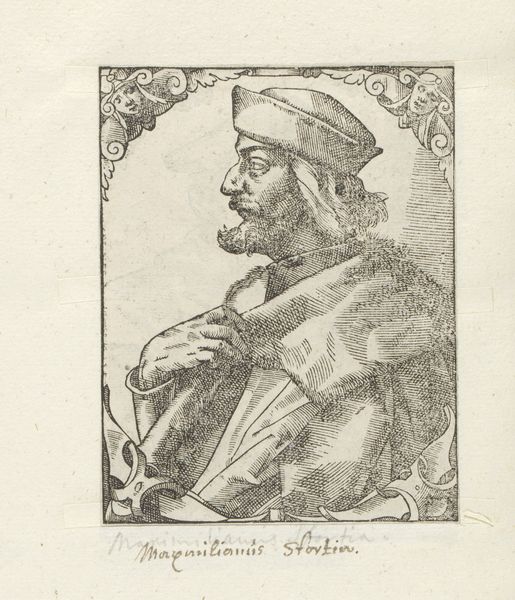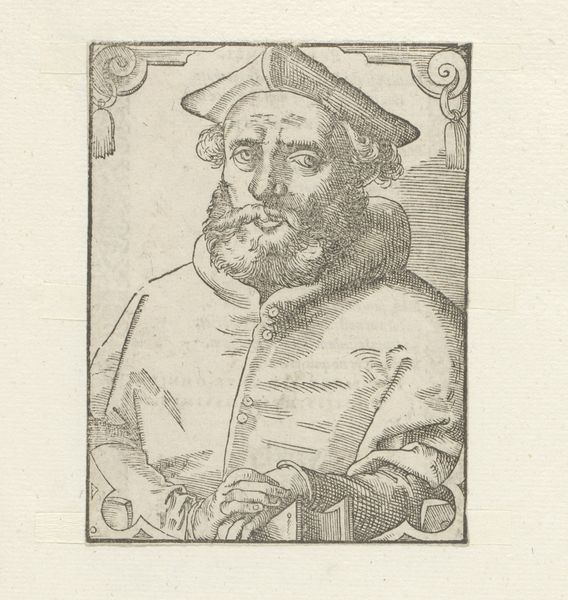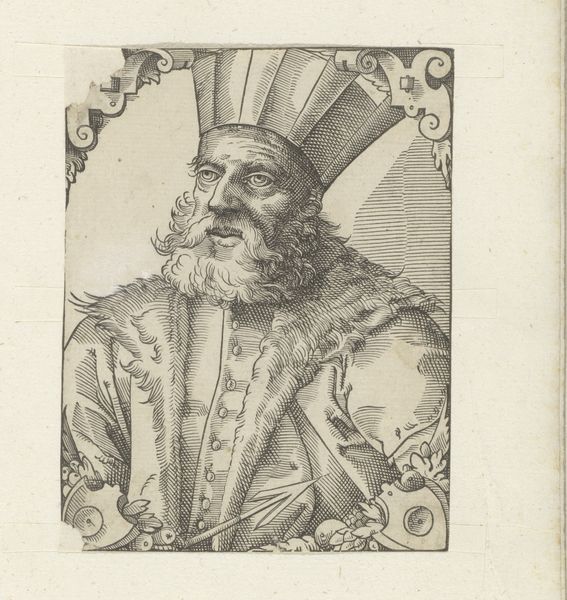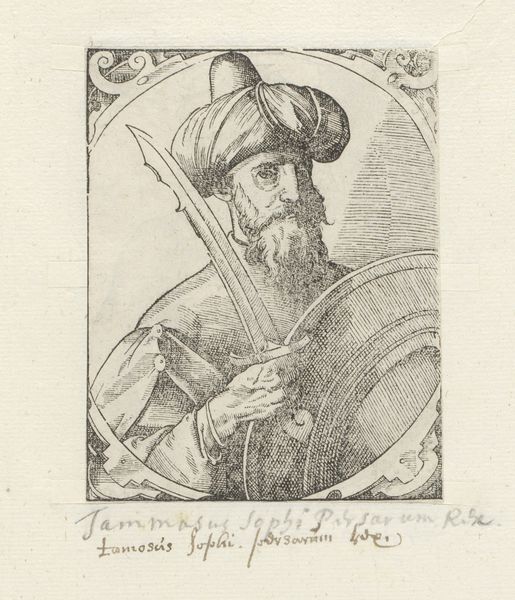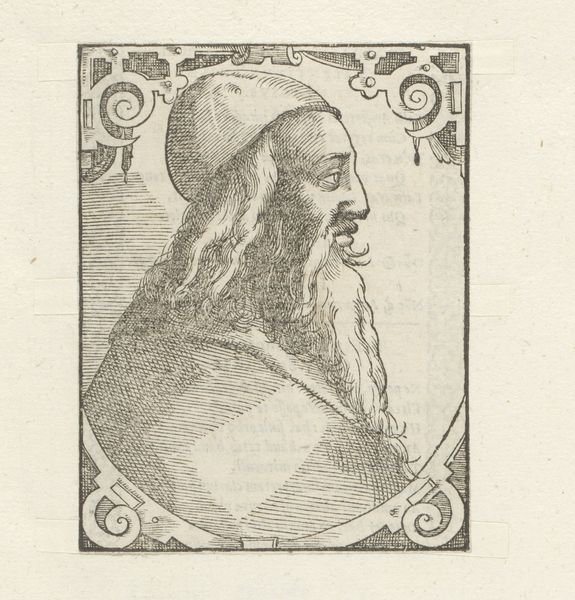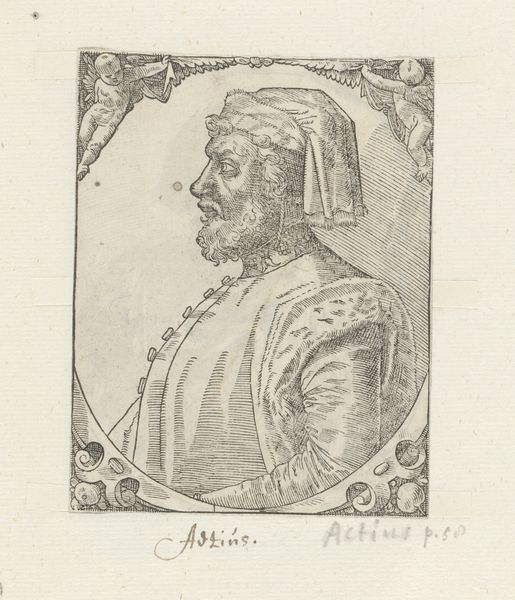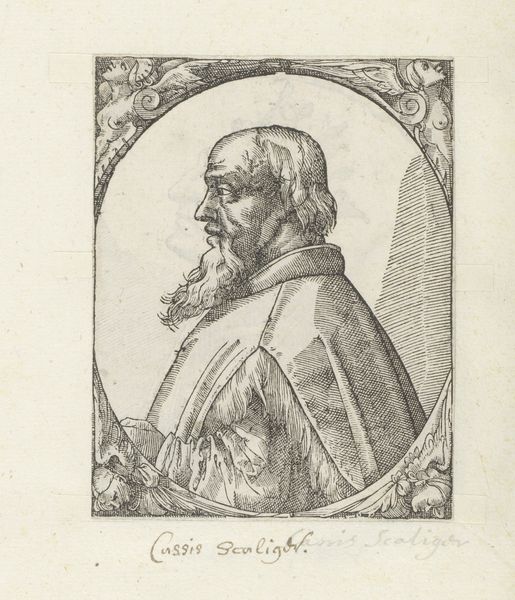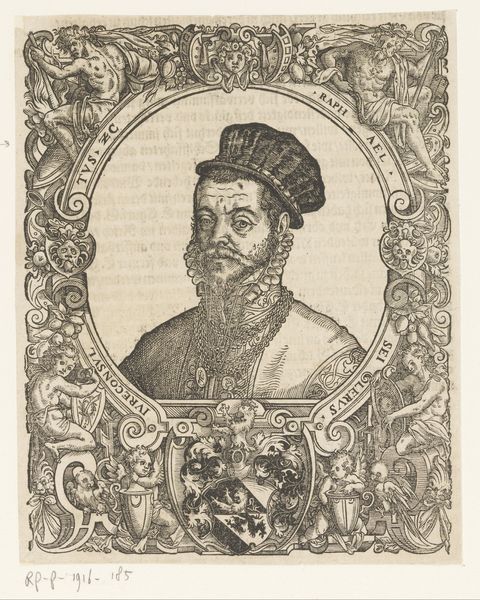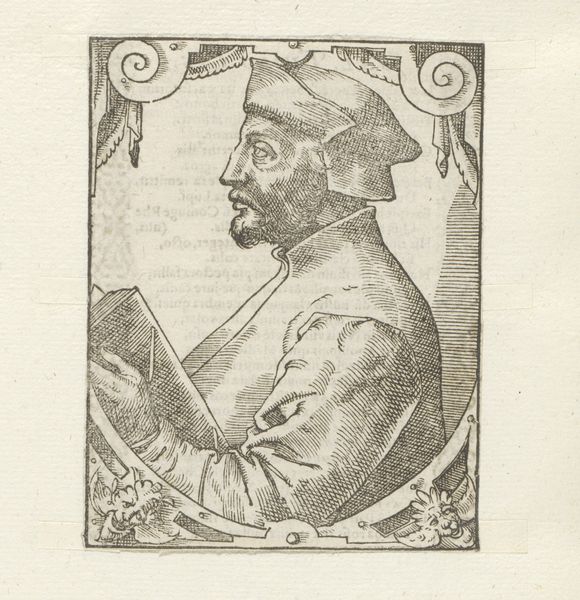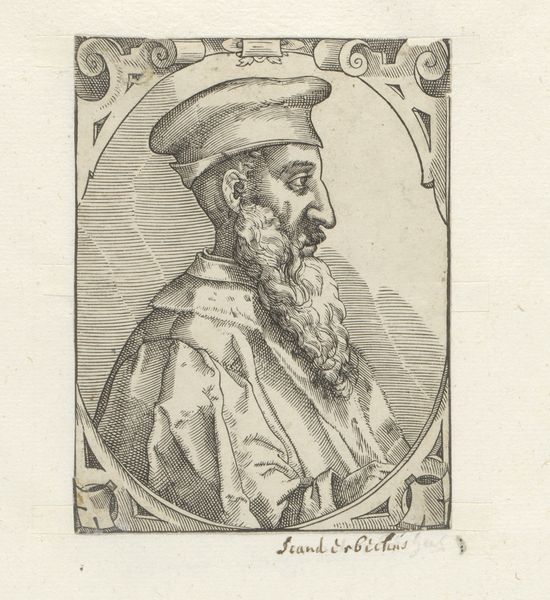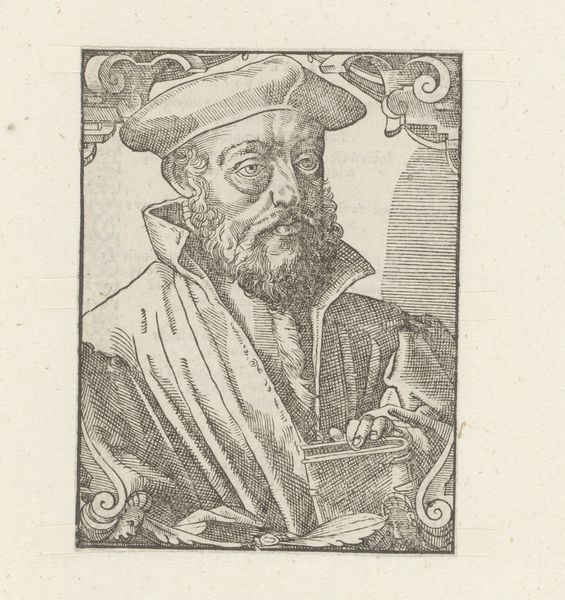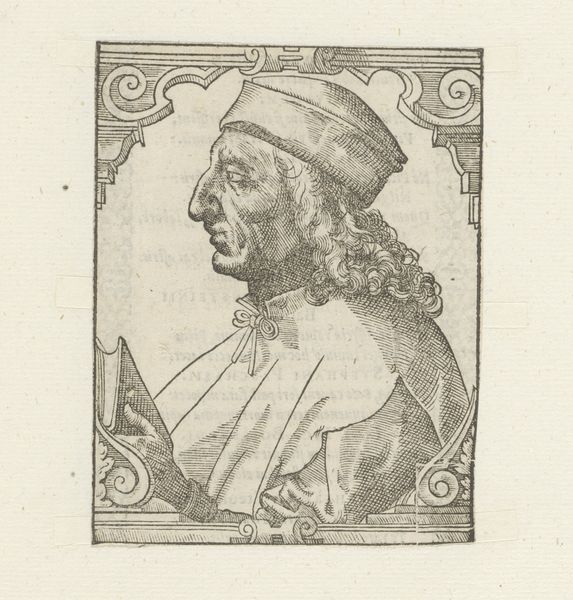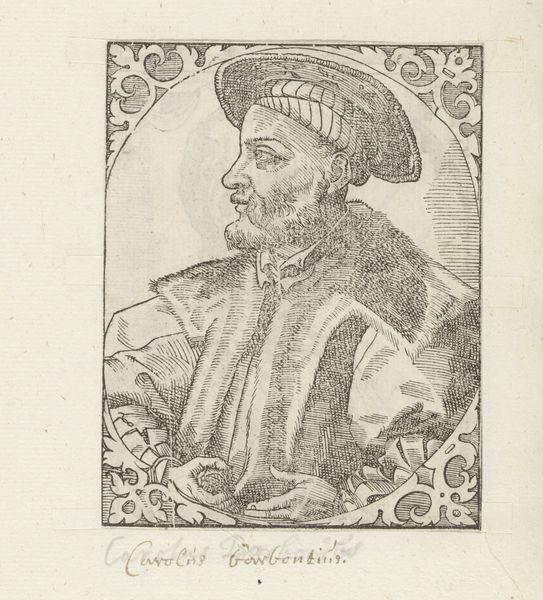
print, engraving
#
portrait
# print
#
11_renaissance
#
history-painting
#
italian-renaissance
#
engraving
Dimensions: height 108 mm, width 84 mm
Copyright: Rijks Museum: Open Domain
Curator: This is an engraving entitled "Portret van Bernabò Visconti," created sometime between 1549 and 1575. The piece gives us an impression of a historical figure from the Italian Renaissance. Editor: My first thought is the austerity of the piece. Even though the ornate border hints at luxury, there is a certain severity in the subject's expression and the stark lines of the engraving. Curator: Absolutely. Looking through a lens of power and representation, we can unpack how visual art serves to solidify historical narratives. Who was Bernabò Visconti and why immortalize him in this medium? The artist offers him as a type, but what aspects are highlighted or elided in the choice of the profile angle? Editor: For me, the profile directs attention to specific symbols: the headdress, which speaks to both religious and political power, and his beard, which implies wisdom and maturity. There’s also the ornate frame with mythological imagery suggesting an idealized vision. Curator: Precisely. We should think about what this era tells us about portraiture's function within social structures. The fact that Visconti is depicted sideways feels symbolic too. This position can make us question our engagement with history, inviting a deeper reflection on social dynamics and their reverberation throughout history. What choices led to this specific image circulating? Editor: It reminds me that an engraving can capture historical specificity but then allow that imagery to propagate indefinitely, continually influencing perceptions. Notice how this contrasts with, say, an oil painting whose presence is materially unique and localized. Here, memory can become mutable, constantly reproduced, and carried. Curator: And potentially re-interpreted according to present values. How do viewers interpret the implications of power through today's awareness of gender and identity? What narrative power is the figure inheriting? Editor: Yes! Engravings such as this aren't static. Instead, they are sites where past, present, and future can merge and prompt urgent discussion of the ever-changing power of imagery. Curator: A critical point, it challenges our assumptions of truth and provides opportunities to re-imagine traditional constructs, helping us see the historical echoes within contemporary power systems. Editor: In closing, seeing history brought to life this way invites one to not only study symbolism as historical objects, but as alive! Always capable of shifting, reforming and remaining meaningful throughout the times.
Comments
No comments
Be the first to comment and join the conversation on the ultimate creative platform.
